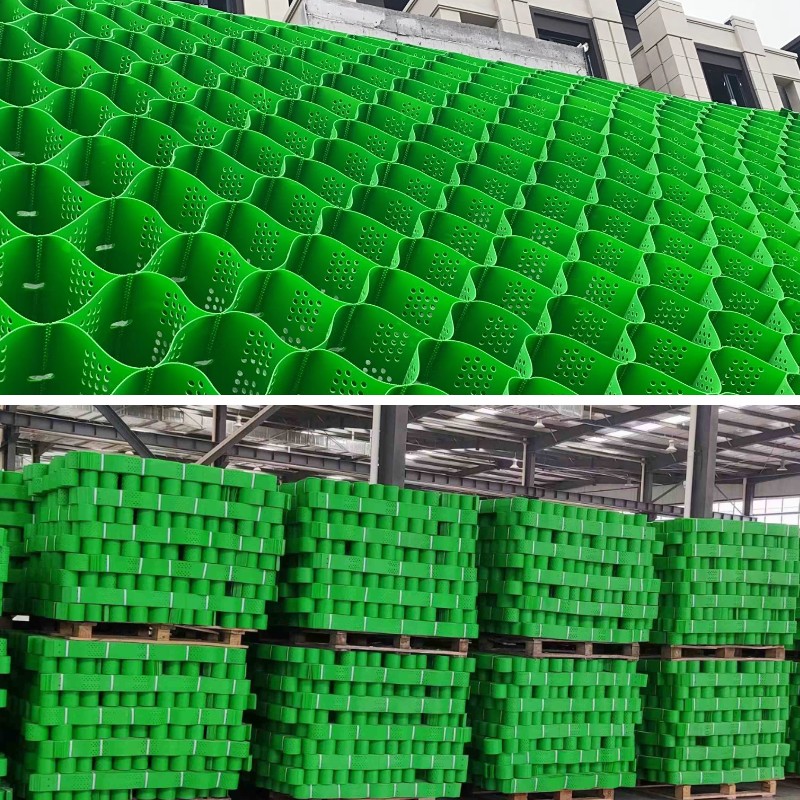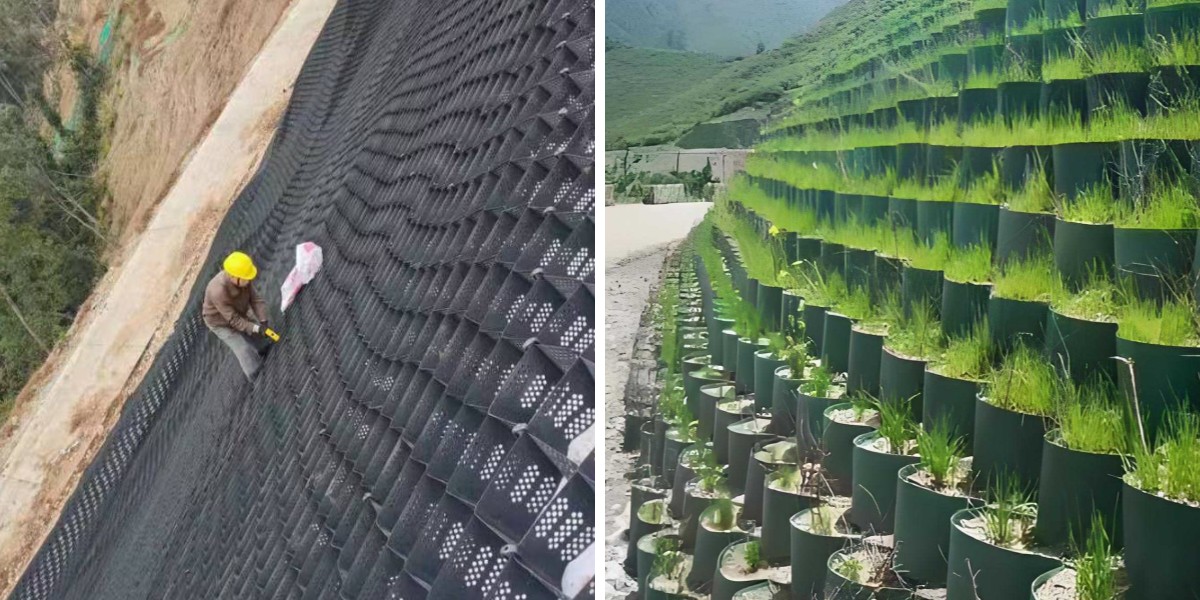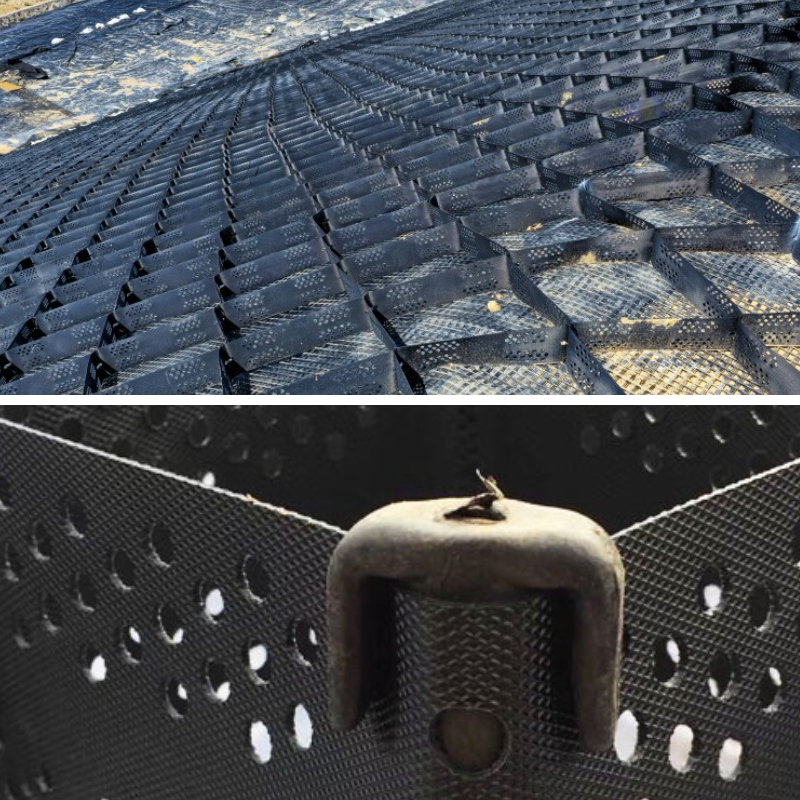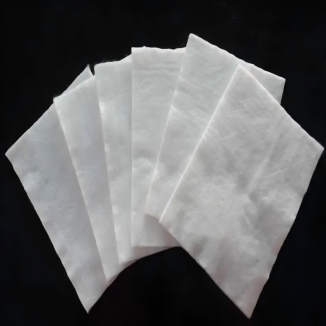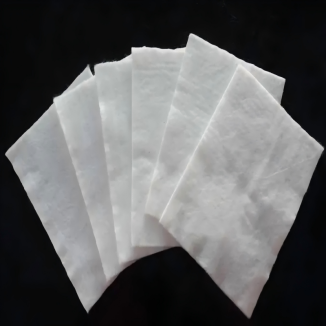How to Maintain a Geocell Driveway: Tips to Extend Its Lifespan
Let me start by saying—geocell driveways are a game-changer for homeowners who want durability without the high cost of asphalt or concrete. A big part of why they work so well? hdpe geocell (that’s high-density polyethylene, in case you’re new to this) material. It’s tough, flexible, and holds up against all kinds of wear. Unlike loose gravel driveways that shift every time you park, geocells use interlocking cells to lock aggregate in place—no more ruts or erosion. And here’s a fun fact: this same design isn’t just for driveways. Geocells in road construction have been keeping highways and rural roads strong for decades. If it works for heavy trucks, it’ll definitely work for your car or SUV.
But here’s the thing—even the sturdiest geocell road needs maintenance, and your driveway is no different. Skip the upkeep, and you’ll end up with cracks, sinking spots, or worse. Below are 5 tips I’ve picked up from working with geocell projects—simple, actionable stuff that’ll keep your driveway going for 20+ years.
1. Regular Cleaning: Don’t Let Debris Ruin Your HDPE Geocell
If you’ve got trees or bushes around your driveway, you know the drill—leaves, twigs, and random dirt pile up fast. At first glance, it might just look messy, but that debris is actually bad news for your hdpe geocell. It traps moisture (hello, mold and mildew), clogs drainage, and over time, can even weigh down the geocell so much it warps.
Here’s how you can clean it right:
Sweep once a week—no exceptions: Grab a stiff-bristle broom (the kind you use for your garage or sidewalk; soft ones just push debris around). Focus on the edges of the geocells—leaves love to pile there, and if you let them sit, they’ll decompose and stain the geocell.
Rinse monthly with a garden hose: For dirt that’s stuck on, a regular garden hose with a spray nozzle works perfectly. Skip the high-pressure washer, though—I’ve seen people use those and blast aggregate right out of the geocells. Aim the water at a 45-degree angle; it’ll flush out the gunk without messing up the cells.
Pick up big stuff ASAP: If a branch falls, or your kid leaves a bike lying there, grab it right away. Heavy debris like that can press down hard on the hdpe geocell, stretching the plastic over time. I once had a client who left a fallen tree limb on their driveway for two weeks—by the time they moved it, the geocell had a permanent dip. Not worth the hassle.
Why does this matter? Think about geocells in road construction—contractors sweep and clear roads every week. Standing water from clogged drains weakens both the geocell and the soil underneath. Your driveway needs that same care to avoid premature wear.
2. Fill Gaps and Ruts: Keep Aggregate Locked In (Just Like They Do for Geocell Roads)
One of the best things about geocell driveways is how little they rut—way better than loose gravel. But even with hdpe geocell holding things together, regular use (like parking in the same spot every day, or your kid zooming around on a skateboard) can create small gaps or shallow ruts. Ignore those, and they’ll get bigger—eventually exposing the geocell and damaging it.
Fixing gaps and ruts is easy—here’s how:
First, check what you’re dealing with: Bend down and look—Is it just missing aggregate, or is the hdpe geocell itself torn? If the geocell is intact, you just need to add more aggregate. If it’s torn, you’ll need to patch it first (more on that in the next tip).
Use the same aggregate you installed with: This is key. If you used crushed stone originally, don’t switch to pea gravel—they’re different sizes, and the pea gravel will just slip through the geocell gaps. Stick to the same material, and it’ll blend right in.
Compact it lightly: After filling the gap, grab a hand tamper (or even the back of a shovel if you don’t have one) and press down gently. Don’t go overboard—too much pressure can stretch the hdpe geocell. You just want the aggregate to stay in place, not squish the cells.
I always tell people: this is exactly how they maintain geocell road projects. Highway crews top up aggregate every few months to keep roads strong. Do the same for your driveway, and you’ll avoid big repairs later.
3. Inspect for HDPE Geocell Damage: Catch Problems Before They Get Worse
Your hdpe geocell is the backbone of your driveway. If it’s damaged, the whole thing falls apart. Now, HDPE is tough—it resists UV rays, chemicals, and rot—but it’s not indestructible. A dropped shovel, a sharp rock, or a fallen tree limb can tear it.
Here’s what to look for when you inspect:
Tears or holes: Walk the entire driveway, bending down to check the cell walls. Small tears (less than 2 inches) are easy to fix—grab some HDPE geocell repair tape from a home improvement store, clean the area, and stick it on. For bigger tears, you might need to patch with a small piece of geocell material.
Loose or lifted edges: The geocell should be staked down around the perimeter. If edges are lifting, pull them back down and re-stake them. Add a little extra aggregate along the edge too—it’ll hold the geocell in place. I had a neighbor who ignored lifted edges, and within a year, the whole side of their driveway started to shift.
Sunken areas: If part of your driveway is lower than the rest, two things could be wrong: either the hdpe geocell stretched, or the soil underneath shifted. For small sinks, just add aggregate. For bigger ones, you’ll need to lift the geocell (gently!) and add a layer of compacted soil underneath—then re-add aggregate.
In geocells in road construction, engineers check for damage every 3 months. You don’t need to be that strict, but aim for every 3–6 months—especially after heavy rain or snow. Catching a small tear early is way cheaper than replacing a whole section of geocell.
4. Seasonal Maintenance: Fight the Weather (Your HDPE Geocell Will Thank You)
Weather is the biggest enemy of any driveway—rain, heat, snow, you name it. Your hdpe geocell can handle it, but it needs a little help from you depending on the season.
Let’s break it down by season:
Spring (rainy season): Clear the drainage ditches around your driveway! I learned this the hard way last spring—my driveway had a small dip that turned into a puddle, and I ignored it. A month later, the soil under the geocell got soft, and I had to add extra compacted dirt. Geocell road designs always include good drainage for a reason—standing water kills geocells.
Summer (hot weather): HDPE geocell doesn’t melt, but extreme heat can make aggregate expand a little. If you have an RV or a heavy trailer, don’t park it in the same spot for weeks. I had a client who left their RV on their driveway all summer—by fall, there was a permanent rut. Move heavy vehicles around if you can.
Fall (leaf season): Step up your sweeping! Instead of once a week, do it every 2–3 days. Decomposing leaves release acids that eat away at aggregate—trust me, you don’t want to deal with that. Rake up leaves, bag them, and get them off the driveway.
Winter (freezing temps): Skip the salt or chemical deicers—they corrode hdpe geocell over time. Use sand instead; it gives traction without damaging the plastic. And when you shovel snow, go easy—don’t scrape the shovel along the geocell surface. I’ve seen people scratch their geocells by being too rough.
5. Don’t Overload It: Stay Within Your HDPE Geocell’s Limits
Hdpe geocell is strong—remember, it’s used in geocells in road construction to hold up big trucks. But residential driveways are designed for regular cars, SUVs, or small pickup trucks. Push the weight limit, and you’ll break the geocell.
Here’s what to avoid:
Heavy equipment: If you’re doing a home renovation, don’t park a bulldozer or cement truck on your driveway. That weight will stretch or snap the hdpe geocell’s cells. I once saw a driveway where the owner parked a construction trailer—half the geocells were torn, and they had to replace the whole thing.
Permanent structures: This should go without saying, but don’t build a shed, patio, or deck on your geocell driveway. The constant weight will compress the geocell and aggregate, and there’s no fixing that—you’ll have to start over.
Concentrated weight: Even with regular cars, don’t park in the same spot every single day. Spread out the weight—park on the left side one week, the right the next. It’s a small change, but it works—geocell road crews do this to keep highways from rutting.
Final Thoughts: A Little Maintenance Goes a Long Way
Geocell driveways are “low-maintenance,” not “no-maintenance.” Spend 10–15 minutes a week sweeping, check for damage every few months, and adjust for the seasons—and your driveway will outlast most asphalt or concrete ones.
The hdpe geocell is the star here, but it can’t do all the work alone. Those small, regular tasks—like filling a gap or clearing leaves—are way cheaper than replacing a damaged geocell. Trust me, I’ve seen both sides: homeowners who keep up with maintenance, and those who don’t. The ones who do? Their driveways look as good as new 10 years later.
So grab that broom, do a quick inspection, and keep your geocell driveway strong. It’ll thank you for it.
Contact Us
Company Name: Shandong Chuangwei New Materials Co., LTD
Contact Person :Jaden Sylvan
Contact Number :+86 19305485668
WhatsApp:+86 19305485668
Enterprise Email: cggeosynthetics@gmail.com
Enterprise Address: Entrepreneurship Park, Dayue District, Tai 'an City,
Shandong Province


